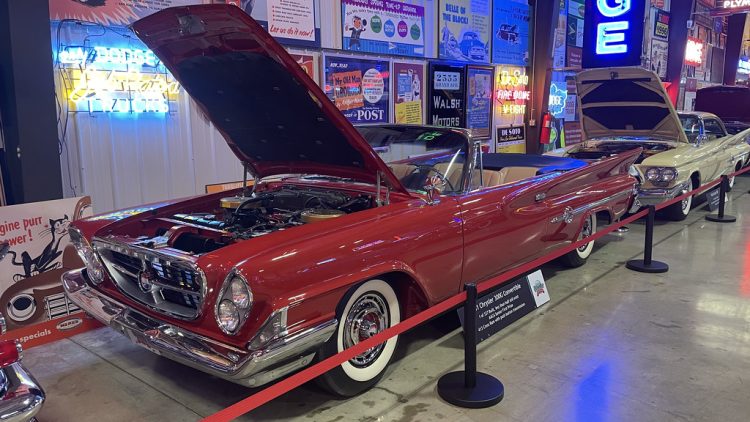The Role of Collectibles
Automobilia is a fascinating and intricate part of automotive history, encompassing a wide range of items that document, celebrate, and preserve the essence of car culture. From miniature models of classic cars to vintage advertisements, promotional posters, and rare dealership memorabilia, automobilia serves as a physical testament to the evolution of the automobile and its cultural significance. These items not only represent the vehicles themselves but also encapsulate the broader history of the automotive industry, its technological advancements, and its impact on society.
The role of collectibles in preserving automotive history is multifaceted. First and foremost, they provide a visual and tactile connection to the past. Car enthusiasts and collectors often see automobilia as more than just a hobby; it is a way to preserve and celebrate the history of their favorite cars, brands, and periods in automotive development. As new generations of collectors and enthusiasts come of age, these items become a bridge to the past, offering a glimpse into the golden eras of automobile design, technology, and innovation.
One of the most cherished forms of automobilia is die-cast model cars. These miniature replicas of full-scale vehicles are often produced in limited quantities and can range from basic models to intricately detailed renditions of classic or rare cars. These models are not just toys; they are valuable collectibles that reflect the artistry and craftsmanship of the cars they represent. Many collectors seek out specific models that represent milestones in automotive history, such as the release of iconic cars like the Ford Mustang, Porsche 911, or Chevrolet Corvette. By acquiring these models, collectors are able to own a piece of automotive history, preserving the legacy of these vehicles for future generations.
Vintage advertisements also play a crucial role in preserving automotive history. Whether printed in magazines, displayed on billboards, or featured in promotional brochures, these ads provide a snapshot of the marketing and cultural climate of their time. For example, advertisements for muscle cars from the 1960s and 1970s reflect not only the performance capabilities of the vehicles but also the cultural attitudes toward power, freedom, and youth. Ads from the 1950s, on the other hand, often highlighted the elegance and sophistication of automobiles, echoing the post-war optimism of the era. These advertisements offer invaluable insights into the changing perceptions of automobiles and the ways in which car manufacturers sought to connect with consumers over the decades.
Another significant category of automobilia includes rare dealership memorabilia, such as signage, promotional items, and even service manuals. These objects can be incredibly valuable to collectors and historians alike, as they offer a deeper understanding of the automotive sales experience and customer interaction during different periods in history. Dealerships played an integral role in the automotive industry, shaping consumer experiences and influencing the ways in which cars were marketed and sold. Items such as vintage dealership signs, keys, or even uniforms worn by salespeople provide a tangible connection to these experiences and the overall consumer culture surrounding automobiles.
Additionally, automobilia can be a means of preserving the memory of historic races, car shows, and automotive events. Programs, ticket stubs, and event posters from famous races like the Indianapolis 500 or Le Mans are highly sought after by collectors, as they commemorate moments in automotive history and celebrate the achievements of legendary drivers and manufacturers. These items act as visual and physical records of milestones in motorsport history, reminding us of the speed, skill, and passion that have always been integral to the automotive world.

Modern-Day Market
The modern-day market for automobilia is both robust and dynamic, fueled by a global network of collectors, enthusiasts, and investors. While automobilia has always been a niche market, it has grown in prominence in recent decades, driven by the increasing interest in classic cars and vintage automotive culture. This shift in interest has led to the proliferation of online auctions, specialized dealerships, and collector conventions dedicated to automobilia. Today, collectors can find an endless array of automotive-related memorabilia, from vintage gas station signs to limited-edition prints of classic car advertisements.
The digital age has significantly transformed the market for automobilia, making it easier for collectors to connect with one another, share knowledge, and discover rare items. Online auction platforms such as eBay, as well as dedicated sites like Bonhams and RM Sotheby’s, have revolutionized the way automobilia is bought and sold. These platforms allow enthusiasts from around the world to access an expansive inventory of collectibles, with many high-profile auctions drawing bids from deep-pocketed buyers looking to invest in rare or historically significant items.
In recent years, the growth of social media platforms, such as Instagram and Facebook, has further amplified the market for automobilia. These platforms enable collectors and enthusiasts to showcase their collections, share tips and resources, and connect with other like-minded individuals across the globe. Hashtags such as #Automobilia, #VintageCars, and #ClassicCarCulture have brought together communities of people who may never have met otherwise, fostering a sense of camaraderie and shared passion for the history of automobiles.
For collectors, automobilia represents more than just a hobby; it is a form of investment. Many items, especially rare and well-preserved pieces, have appreciated in value over time. Classic model cars, vintage advertisements, and dealership memorabilia can fetch high prices at auction, especially when tied to significant milestones in automotive history. Some collectors view automobilia as a way to diversify their investment portfolios, with certain pieces showing significant returns on investment over time. For example, a vintage Ferrari dealership sign from the 1950s or a rare promotional poster for a 1960s Jaguar could fetch tens of thousands of dollars at auction.
In addition to its monetary value, automobilia plays an essential role in maintaining the spirit of automotive culture. As new generations of car enthusiasts enter the market, there is an increasing demand for vintage items that reflect the history of the industry. As the automotive world continues to evolve with new technologies and electric vehicles, automobilia offers a link to a past that is rapidly becoming more distant. Collectors of automobilia not only seek to preserve physical items but also to preserve the stories, values, and emotions that these objects represent. Through these collectibles, they ensure that the history of the automobile is not lost to time but continues to inspire future generations.
Moreover, the preservation of automobilia also contributes to the educational aspect of automotive history. Museums, archives, and even car clubs rely on automobilia to tell the stories of the past. These institutions use collectibles to create exhibits, offer educational programs, and host events that celebrate the legacy of automobiles. By showcasing rare items from their collections, they provide visitors with a deeper understanding of the people, the brands, and the innovations that shaped the automotive world.
The Role of Automobilia in the Broader Automotive Community
Automobilia is not only a passion for collectors but also plays an important role in strengthening the broader automotive community. Car shows, races, and museum exhibitions often incorporate automobilia as part of their displays, offering a richer experience for attendees. By showcasing vintage memorabilia alongside classic and rare vehicles, these events provide a comprehensive view of automotive history, highlighting the connections between cars, culture, and technology.
Automobilia also fosters a sense of community among car enthusiasts. Whether it’s a collector finding a rare piece to add to their collection or a group of enthusiasts sharing stories about their favorite cars, automobilia serves as a common language for car lovers. It brings together people from all walks of life, united by their shared admiration for the automobile and the history it represents.
In some ways, automobilia is an ongoing conversation between the past and the present. By collecting and preserving items associated with classic cars, manufacturers, and historical events, enthusiasts keep the stories of the automobile alive. They ensure that the legacy of automotive culture continues to be shared, celebrated, and appreciated by future generations. Through automobilia, the history of the car is not just remembered; it is kept vibrant, relevant, and ever-present.
Conclusion
Automobilia plays a vital role in preserving automotive history by serving as a tangible connection to the past. Through collectibles such as model cars, vintage advertisements, and rare dealership items, enthusiasts are able to celebrate and preserve the legacy of the automobile. The modern-day market for automobilia is thriving, fueled by the growing interest in classic cars and the global reach of digital platforms. As both an investment and a passion, automobilia continues to play an important role in the automotive community, connecting people, preserving stories, and ensuring that the history of the automobile is never forgotten.


































Discussion about this post